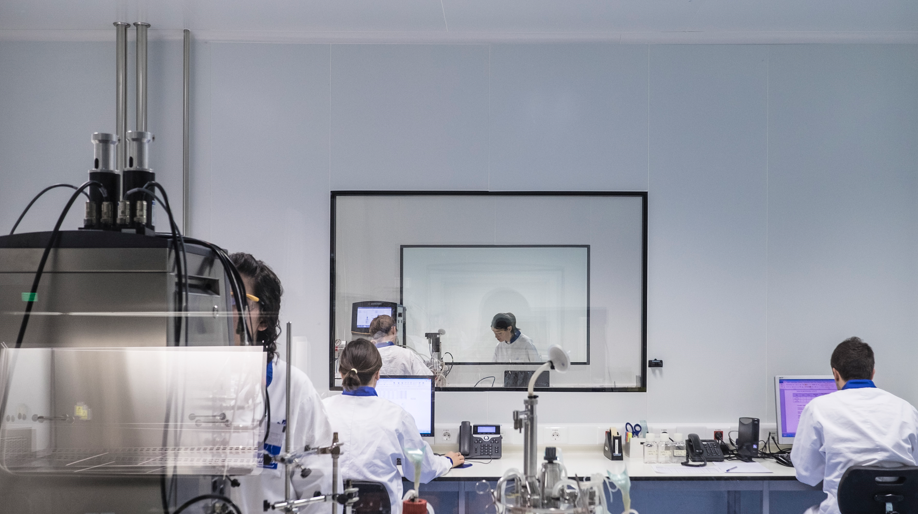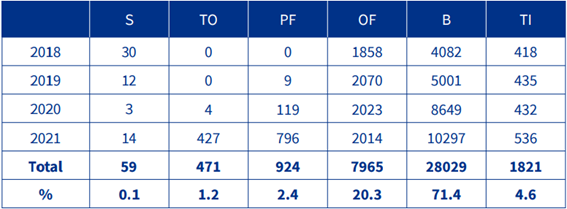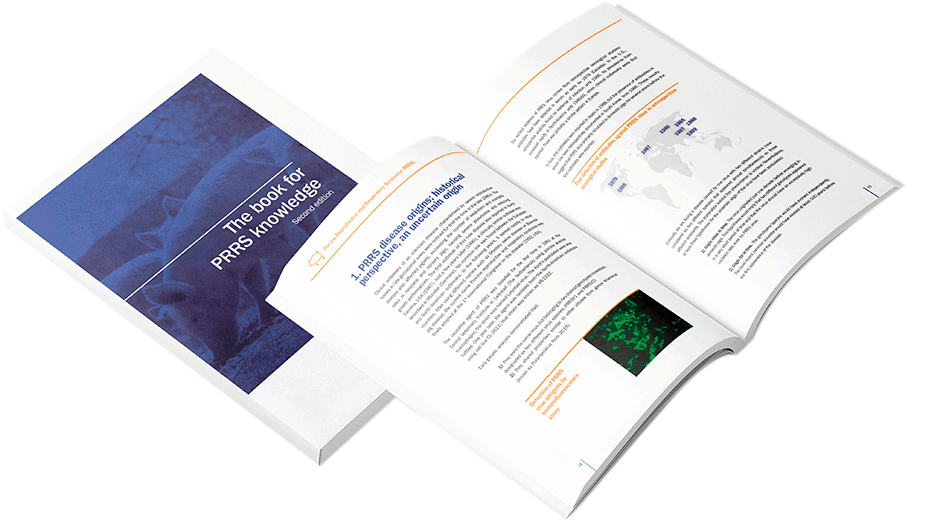Publication of Joel Miranda et al. in the IPVS 2022.
Evolution of PRRS RT-qPCR analysis from 2018 to 2021 in a European laboratory
Introduction
PRRS diagnosis provides valuable information for decision-making for the control and prevention of the disease. Consequently, new sampling methods (processing fluids and tongues) are proposed to facilitate sampling and increase PRRSV detection.
The objective of this study was to analyze the evolution of RT-qPCR results and type of samples received in Diagnos (HIPRA diagnostic laboratory, Spain) from 2018 to 2021.

Materials and Methods
Between January 2018 and December 2021, 39,269 RT-qPCRs were done in the lab on samples coming from different European countries. Samples were grouped as: semen (S), blood (B), oral fluids (OF), tissues (TI) (lungs, lymph nodes, etc.), processing fluids (PF) and tongues (TO). Evolution of % positivity was studied according to the type of sample.
Moreover, positivity of the results, divided into four periods from December to February (Dec-Feb), March to May (Mar-May), June to August (Jun-Aug) and September to November (Sep-Nov), was analyzed to evaluate seasonal incidence.
Results
6,388, 7,527, 11,270 and 14,084 RT-qPCRs were performed yearly from 2018 to 2021. B, OF and TI accounted for 71.4%, 20.3% and 4.6% of the samples received since 2018, respectively. PF accounted for 2.4% and TO for 1.2% of the samples (Table 1).
Regarding positivity, 24%, 20.4%, 44.1%, 18.4%, 34.8% and 1.7% of the samples were positive in the case of B, OF, TI, PF, TO and S, respectively, statistically significant differences were found between type of samples (Table 2). From 2018 to 2021, the seasonal incidence was 24.9%, 22.1%, 22.7% and 27.2% in Mar-May, Jun-Aug, Sep-Nov and Dec-Feb respectively and statistical significance was found between seasons (Table 3).

Table 1. Type of sample per year.

Table 2. Positivity by type of sample
P-value < 0.001 *** Model= Logistic Regression Model

Table 3. Positivity by period
P-value < 0.001 Model= Logistic Regression Model
Discussion and Conclusion
Sampling with TO represents an alternative for monitoring piglets at early ages to detect vertical transmission of the virus as it is a convenient and easy sampling method with a high detection rate, higher than B, OF and PF.
Moreover, sampling at early ages with PF cannot be used on all farms because the castration rate is low in some countries.
Thus, sampling with TO represents a suitable alternative with a good level of detection.
Regarding seasonality of the disease, as expected and previously reported, the highest incidence was in Dec-Feb which are the coldest, foggy months of the year that facilitate the dissemination of the PRRS virus. The season with the second highest detection of PRRS was spring, which was higher than the hottest months of the year.
Seasonality of the disease helps us to anticipate and create strategies to minimize the effect of PRRS in the coldest months of the year.
Read more publications about PRRS.
You can ask your own question! Visit Pig333.com and submit your question to the experts.
HIPRA © All rights reserved



